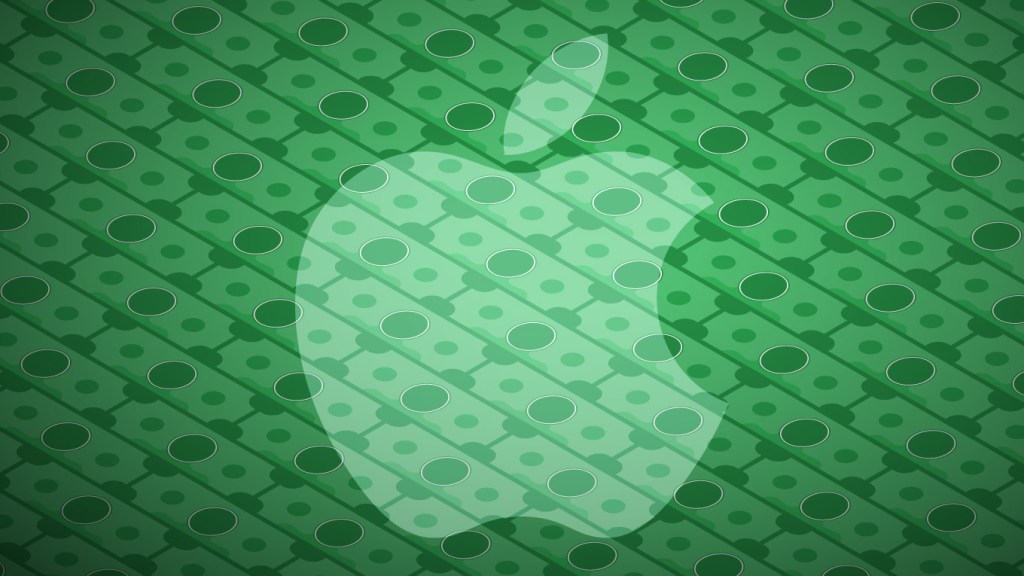Kelli Richards
More posts from Kelli Richards
Apple isn’t releasing exact sales numbers, but some expert digging has led many to believe that sales of the Apple Watch haven’t reached expectations since its launch in spring 2015. The company’s annual filing suggested it sold $1.7 billion worth in fiscal 2015, but compare that with the iPhone, which sold $32.2 billion worth in the fourth quarter alone. That’s a big discrepancy for a company that’s used to seeing lines around the block for new product releases.
I spent 12 years at Apple — most of my corporate career, in fact. During my tenure, I launched and drove the music and entertainment verticals and, as a natural side effect, became intimately immersed in Apple products and processes.
With that knowledge, I have a personal principle for all new launches: Wait about six months before purchasing the latest gadget (particularly in a new product category), as it takes about that long for Apple to work out all the kinks. Usually, the increased functionality is well worth the wait.
Yet even beyond the six-month point, I haven’t yet purchased an Apple Watch myself. And with rumors swarming around about the Apple Watch 2.0, the principle bears repeating: Hold off six months before purchasing.
After spending so much of my career focused on Apple, I possess both an insider’s and an outsider’s view of what’s happening with the watch, and there are several things I’d love to see developed (or at least considered). Here are a few areas in which future iterations of the Apple Watch could be improved to help reach (and boost) projected sales.
Fashion: The current Apple Watch is sleek and smooth compared with other smartwatches, but even as a tech device, it could push the style envelope further. Fashion industry executives now at Apple, including those from brands such as Yves Saint Laurent and Burberry, have tried to establish Apple as a lifestyle brand by upping its sex appeal. The company is even partnering with fashion designer Hermès.
Although Apple has been successful in these ventures for the most part, the exclusive styles born out of these collaborations are still too expensive for most buyers. Everyone wants to be able to customize her watchbands, not just those with deep pockets.
Apple’s next step, then, should be partnering with more inexpensive brands like Target to increase customizability while decreasing the watch’s price. By doing so, Apple would optimize its product by appealing to more of the masses.
Back when the iPod Nano came out, for example, Apple not only created a new space in the market, but also released the product in candy colors that appealed to young kids in its targeted demographic. Likewise, by offering a simpler, cheaper route to band customization, suddenly the pool of potential Apple Watch customers expands.
Independence: What people want most is to not have to carry all their devices with them. And for the Apple Watch, its reliance on an iPhone might be its biggest flaw. Right now, people still have to carry their phones because of the Bluetooth connectivity that enables the watch’s functionality. Without the phone, its uses are limited.
As it stands, the Apple Watch is no more than an iPhone accessory, rather than its own device. But in the future, the watch, independent of any other Apple product, will allow for seamless integration into a user’s personal life. Imagine going for a run and having GPS settled on your wrist without having to carry your phone, or sitting at an airport and hearing airline notifications ping as flight delays happen.
Although this type of feature is most likely too far off for the Apple Watch 2.0, it’s still something to consider moving forward as tech like the watch improves. Similar to the shift away from desktop computers, the Apple Watch could dominate the wearable space in the move away from mobile.
Health: On a more practical level, many people are interested in wearables because of the potential health benefits they provide.
As more Americans try to manage their own health, apps that monitor all facets of wellness grow in popularity. Most Apple products have relied on third-party app developers to create this kind of value, but if Apple could lead and drive more of the innovation and health metric analysis, it would give the brand yet another competitive advantage over other wearable technologies.
Apps that make blood sugar testing easier (without skin pricks) or identify heart attack symptoms would increase the stakes for several companies, such as Fitbit. Apple has an opportunity to be the leader in apps that address real healthcare problems for real people in real time.
When it comes to waiting for technology to mature, I’m in good company. Steve Jobs famously waited years to purchase appliances such as a washer and dryer for his home because he wanted the perfect models that would solve his needs and be highly functional as well as aesthetically pleasing. The same is true for me — and, as sales show, apparently for many others — when it comes to the Apple Watch.
I hope to see Apple implement some of the strategies noted above as the Watch evolves over time. In my experience, these three approaches would quickly attract customers who are waiting to see what the Apple Watch will become and how the wearables space will progress.































Comment